How to Check the DisplayPort Version For Every Cable & Device
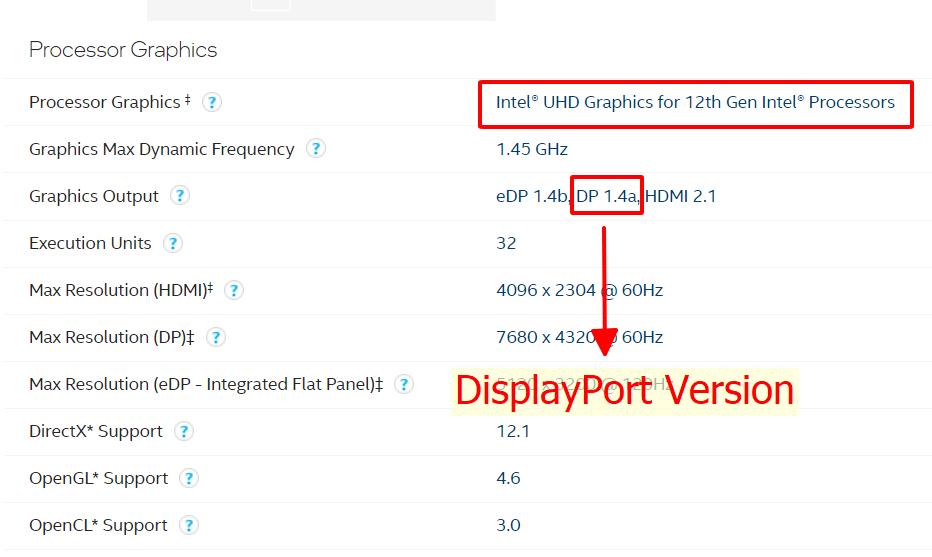

What To Know
- To identify your DisplayPort cable version, check for a code printed on the cable and search it online.
- Use the MSI Afterburner tool to estimate your DisplayPort cable version based on the monitor’s performance, such as observing FPS in games.
- Check your computer’s DisplayPort version by looking up the specs of your processor (Intel or AMD) or eGPU (NVIDIA or AMD) on the manufacturer’s website.
In this article, I’ll show you how to clearly identify the DisplayPort version of both your computer and cable, ensuring a seamless and compatible connection with your high-resolution displays.
Quick Navigation
How to Tell What DisplayPort Version of Your Cable Is?
Understanding the version of your DisplayPort (DP) cable is crucial, particularly if you’re connecting to high-resolution monitors, such as 4K or 8K displays.
The majority of DP cables available today are versions 1.2 to 1.4, providing adequate bandwidth for most modern displays.
Here’s a table summarizing the specifications of various DisplayPort versions:
| DisplayPort Version | Transmission modes | Maximum Resolution (SDR) | Maximum Resolution (HDR) | Maximum Total Bandwidth |
| 1.0–1.1a | HBR | 5K @ 24Hz | 4K @ 30Hz | 10.80 Gbit/s |
| 1.2–1.2a | HBR2 | 5K @ 30Hz | 5K @ 30Hz | 21.60 Gbit/s |
| 1.3 | HBR3 | 8K @ 30Hz | 8K @ 24Hz | 32.40 Gbit/s |
| 1.4–1.4a | HBR3 | 8K @ 30Hz | 8K @ 24Hz | 32.40 Gbit/s |
| 2.0–2.1 | UHBR 20 | 8K @ 85Hz | 8K @ 75Hz | 80.00 Gbit/s |
For most users, particularly those not involved in professional gaming, there’s usually no need to delve into the specifics of your DP cable version.
However, if you’re keen on identifying your DisplayPort cable version, here are two methods to do so:
1. Check the Code on Your DisplayPort Cable
Typically, a certified DisplayPort cable will have a unique code. For instance, my cable is marked “E474198-H.”
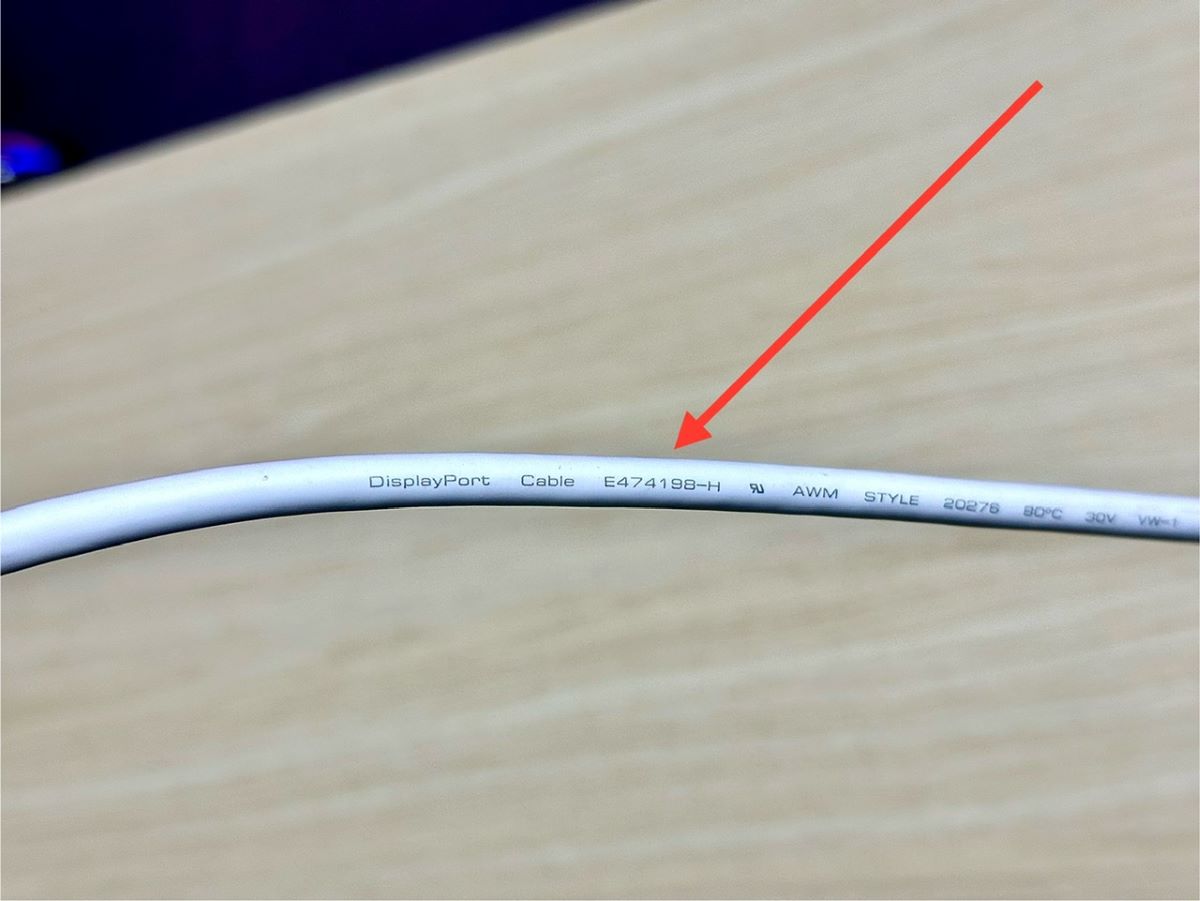
Once you’ve spotted the code, search it online and you’ll find your cable on some e-commerce platforms like Amazon, eBay, etc.
In my experience, when I searched for “E474198-H,” I found my cable listed on eBay. The product description should include the DisplayPort version. In my case, the cable was identified as version 1.4.
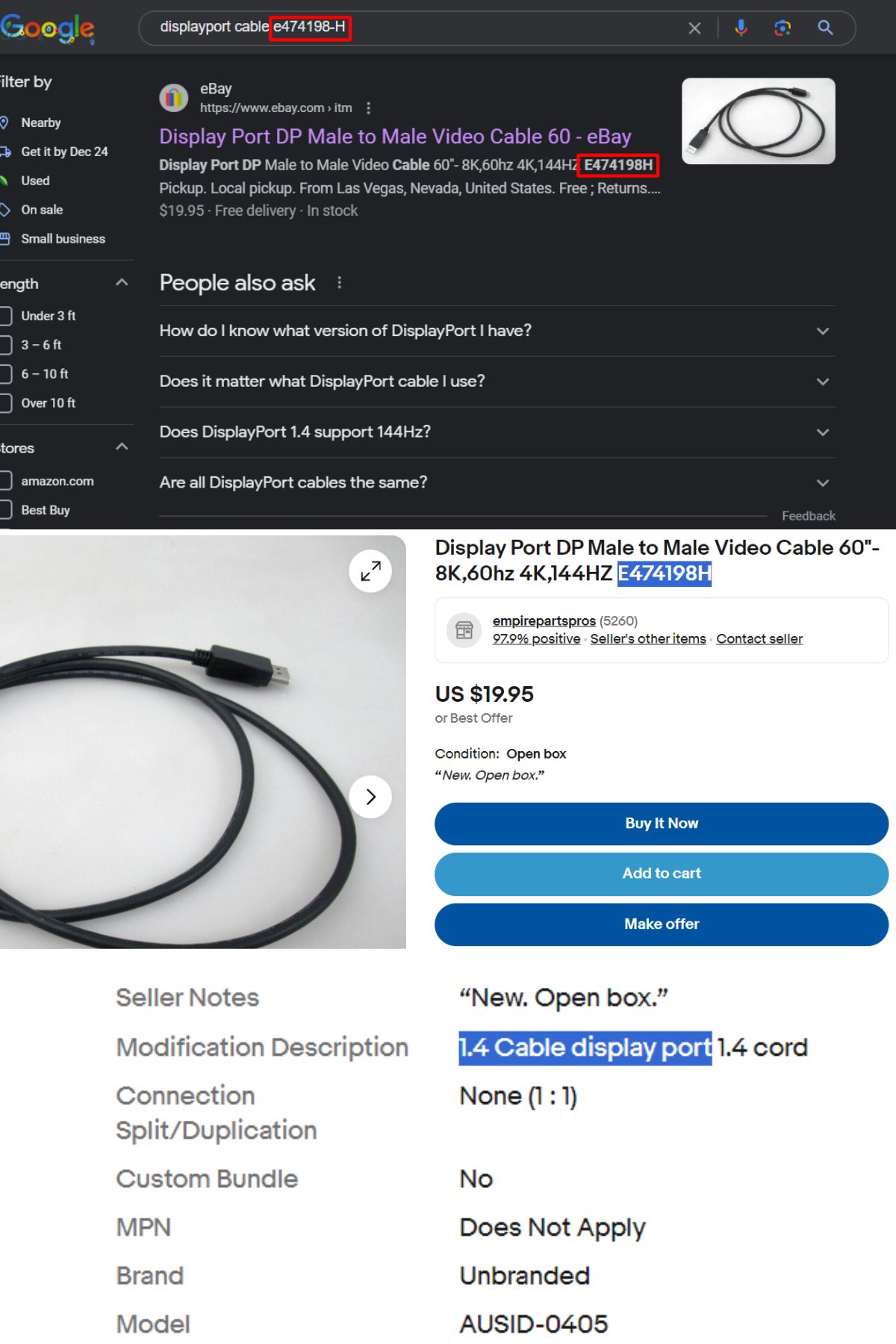
2. Download the MSI Afterburner Tool to Estimate
If you’re using a high-performance monitor, such as a 4K – 144Hz display, the version of your DP cable can affect the display quality. For example, a DP cable version 1.4a or lower will not support 4K at a 144Hz refresh rate.
When playing games like League of Legends, observe the FPS displayed at the top right corner of your screen. If the FPS is lower than expected, it might indicate that your cable is of a lower version.

Alternatively, you can download the MSI Afterburner tool, which shows real-time FPS. If your monitor is running at a lower refresh rate than expected (e.g., 60Hz instead of 144Hz), your cable is likely version 1.4a or lower.
The image below is an example.

Note: make sure the FPS of the game when you’re using the MSI Afterburner tool is not limited to below 144Hz (if you want to verify your 144Hz monitor and DisplayPort cable).
To learn how to set up and use the MSI Afterburner to check for the FPS or refresh rate, check out the below video.
This method is the last resort as it doesn’t directly tell you the cable version but helps you estimate based on the specs of DisplayPort versions.
How to Tell What Version of DisplayPort Your Computer Is?
As DisplayPort versions are updated per year, its bandwidth requirements become more demanding to support higher resolutions, faster refresh rates, and more comprehensive color depth.
Before connecting your source device to a monitor via the DisplayPort, you need to know its maximum resolution and refresh rate.
Unfortunately, it’s not possible to check your DisplayPort version directly from your PC or laptop’s hardware specifications. Most devices won’t specifically indicate the DisplayPort version under the graphics card or display port information, either.
Instead, you will have to check your PC or laptop’s processor graphics specifications under the manufacturer’s site.
In this article, I’ll show you how to check the DisplayPort version of both your integrated GPU and external GPU (eGPU).
1. How to Check the DisplayPort Version of Your Integrated GPU
Step 1: Check Your Processor Type.
For Windows (10 & 11)
Step 1: Press the Windows button, and open the Settings menu.
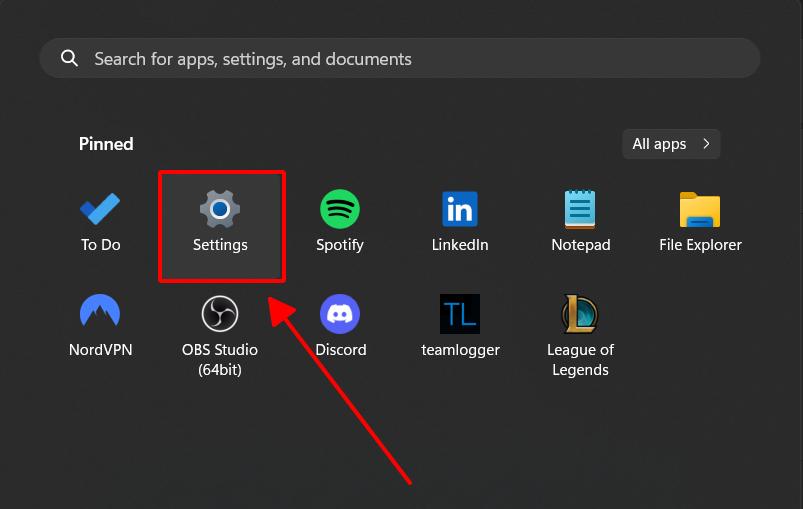
Step 2: Navigate to System, and select About.
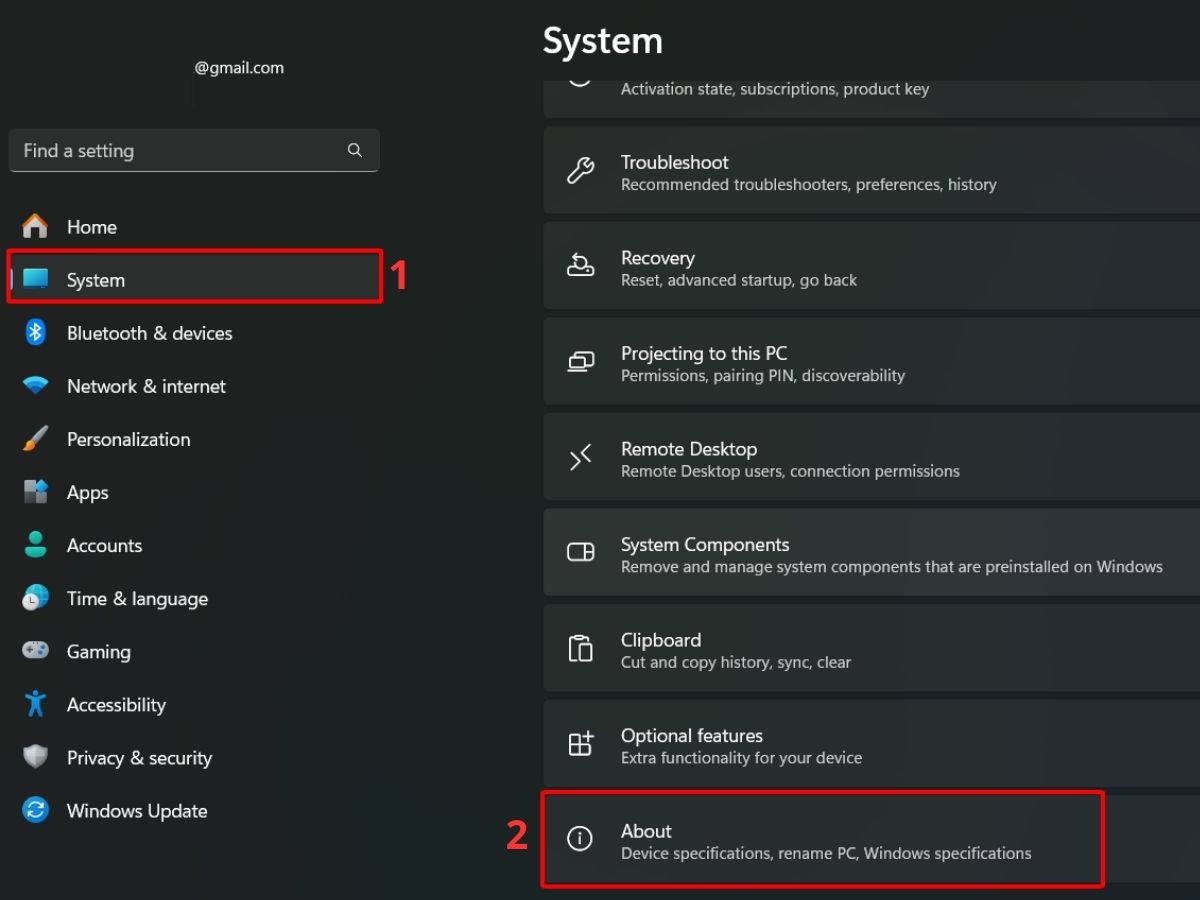
Step 3: Look for the Processor row.
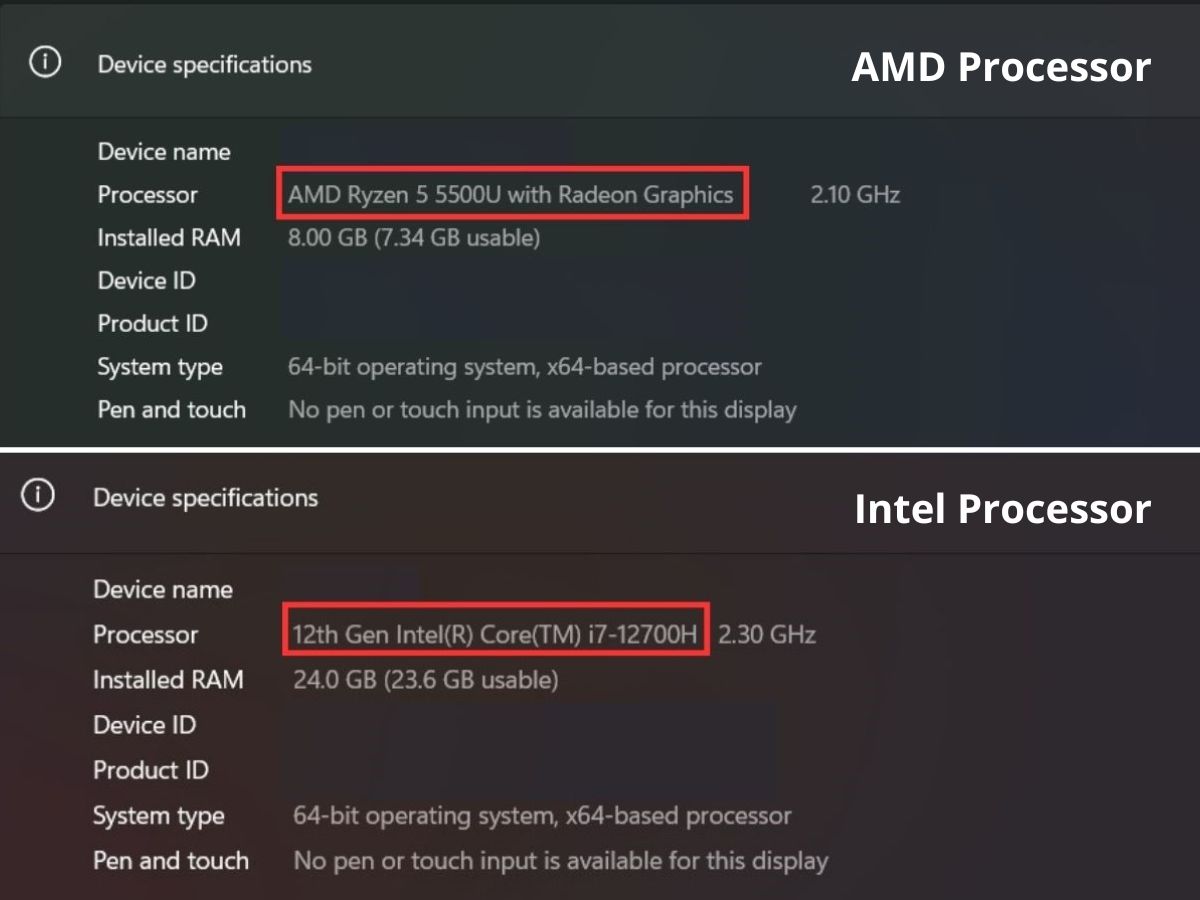
Note down the information, for example, 12th Gen Intel(R) Core(TM) i7-12700H, as you’ll use it in the next step.
For Mac
Step 1: Open the Apple menu, and choose About This Mac.
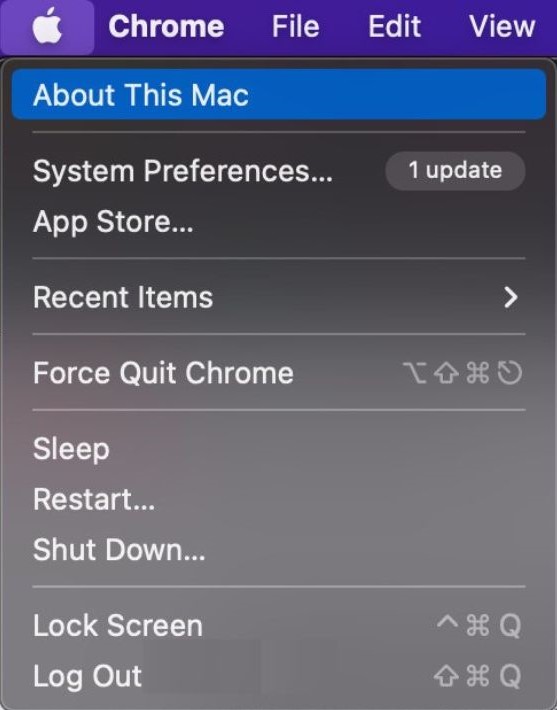
Step 2: In the Overview tab, look for the Processor row.
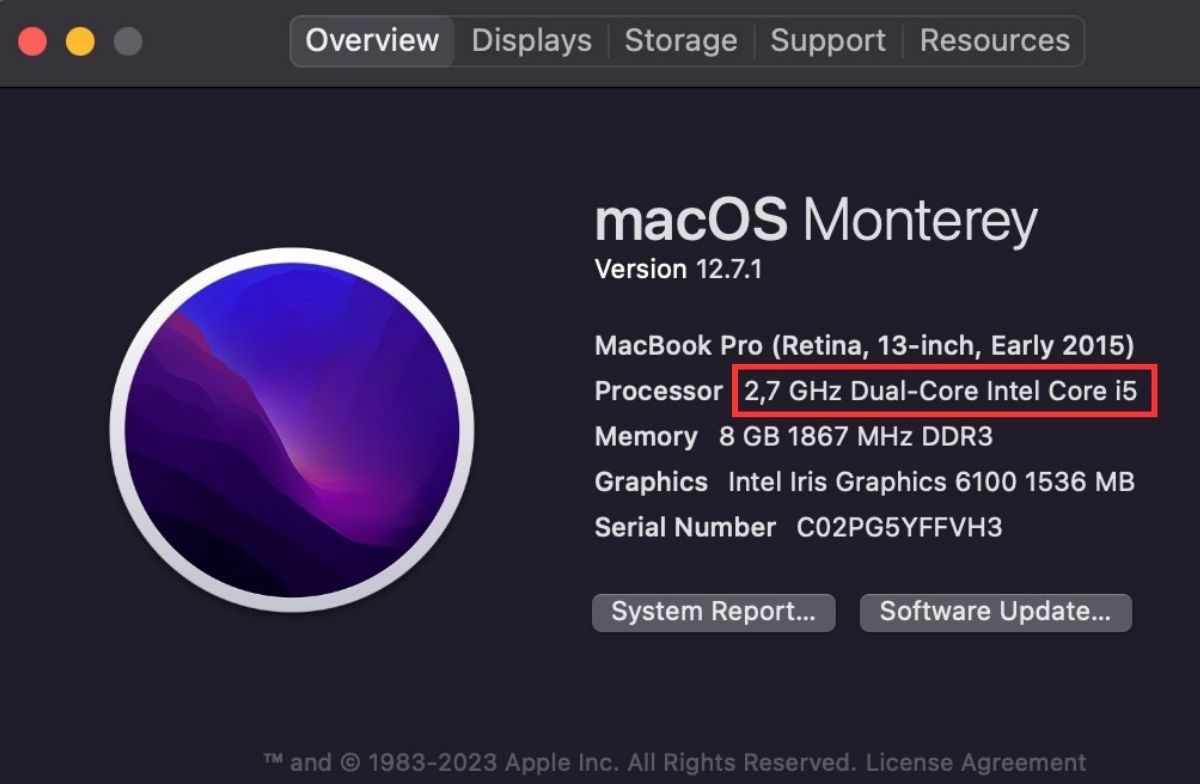
Step 3: Now, go to this website and look for your Mac model. For example, my model is MacBook Pro (Retina, 13-inch, Early 2015) with the 2,7 GHz Dual-Core Intel Core i5, so I’ll head to the MacBook Pro category, and look for my model.
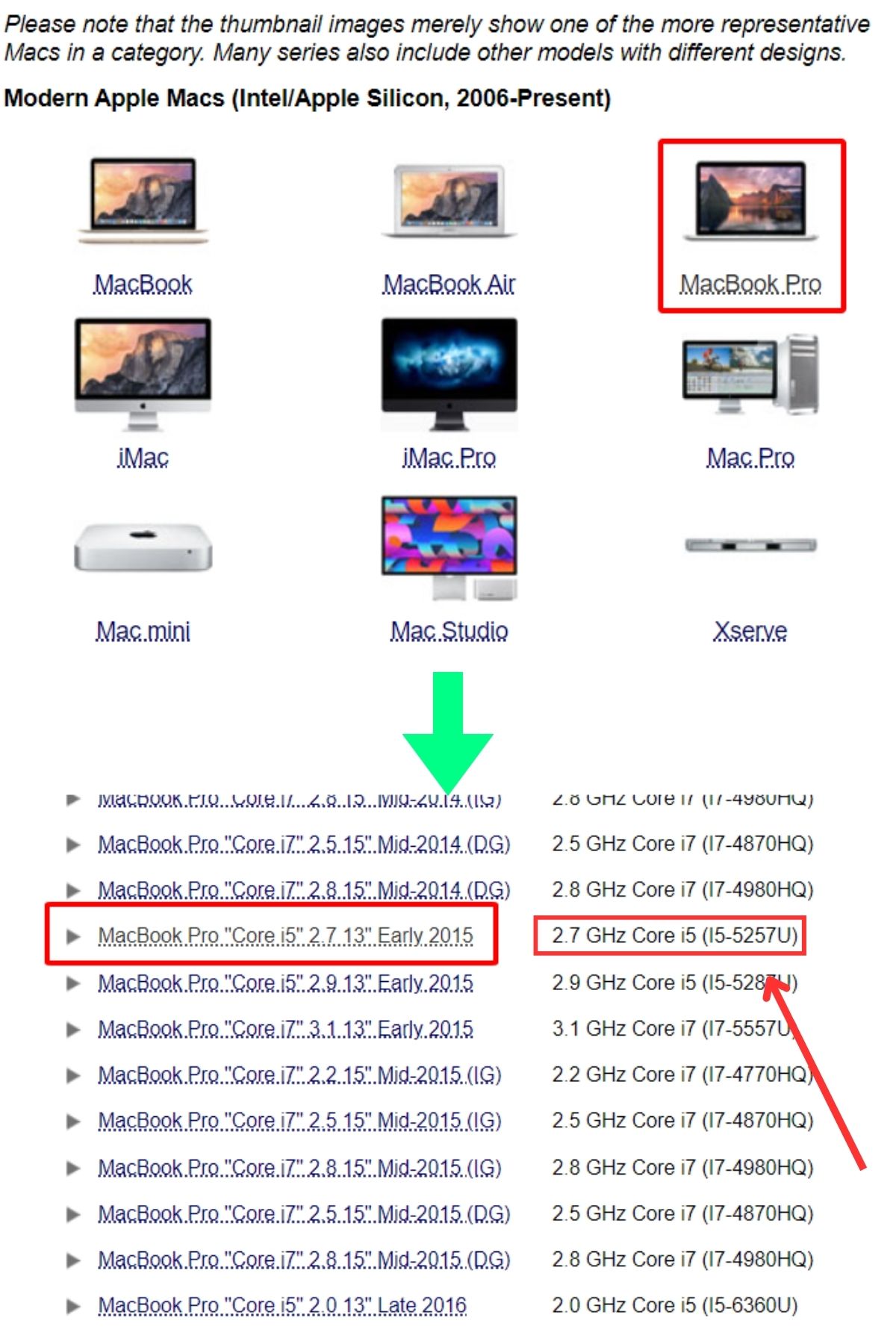
Note down the processor type that appears next to your model, in my case, it’s Core i5-5257U. You will need that number for the next step.
Step 2: Visit Your Processor’s Manufacturer Site.
To determine the DisplayPort version supported by your computer’s processor, you’ll need to visit the manufacturer’s website.
The two most common processor manufacturers are Intel and AMD. Therefore, I’ll guide you through how to check your computer’s DisplayPort version of these two.
For Intel Processor
Step 1: Head to the Intel Product Specification website, and select Processors.
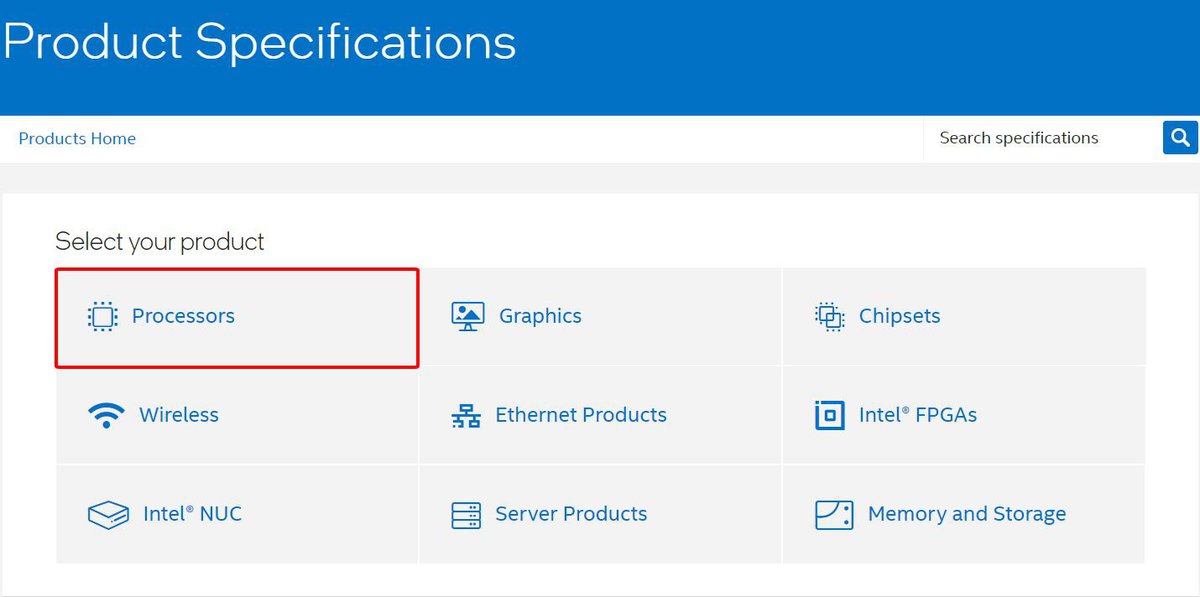
Step 2: Next, since my laptop has a 12th Gen Intel(R) Core(TM) i7-12700H processor, I’ll head to Intel® Core™ Processors, select 12th Generation Intel® Core™ i7 Processors, and look for the “12700H” processor using the finding command Ctrl + F.
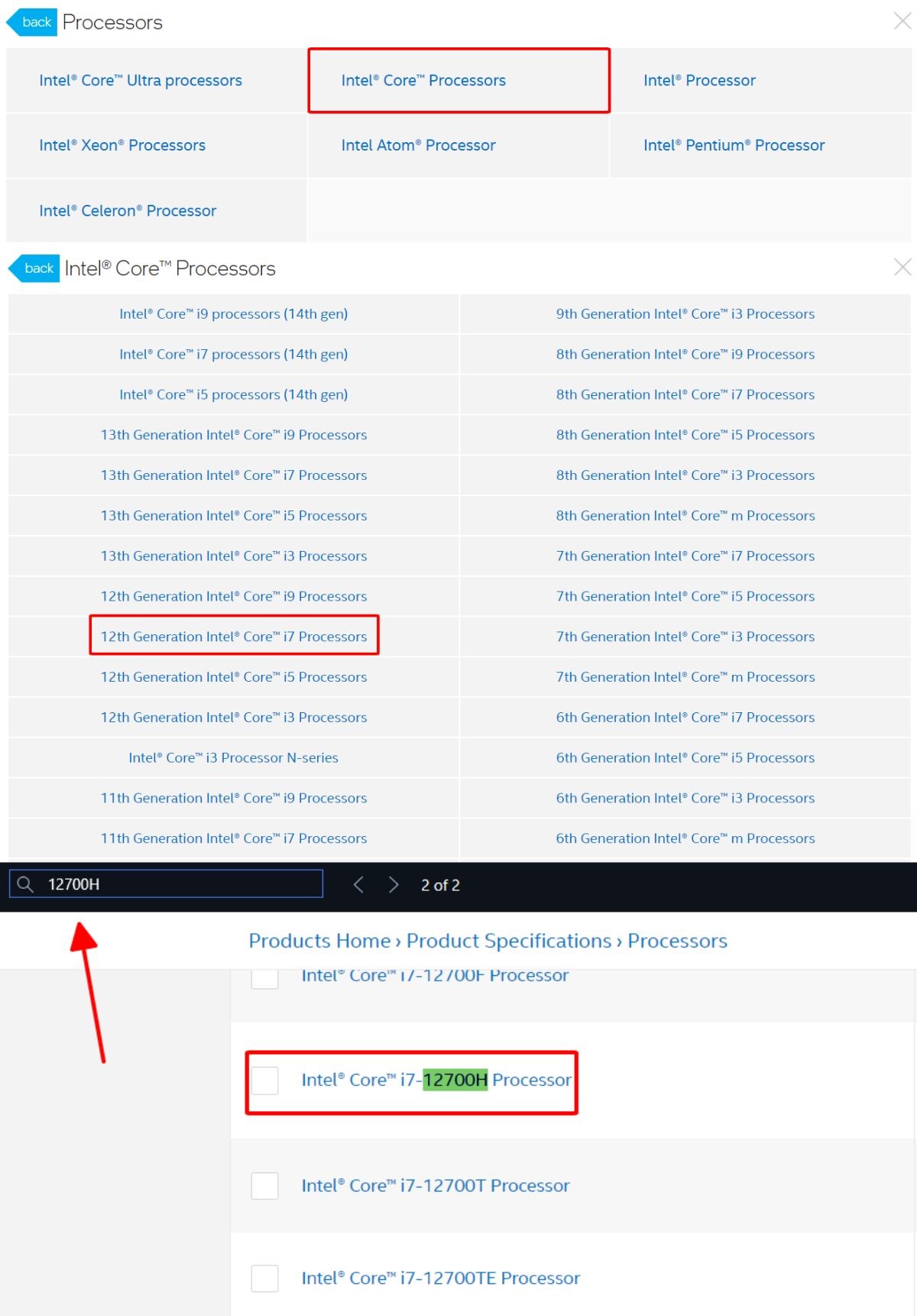
Step 3: Finally, I look for the Graphics Output row, and focus on something like “DP 1.4a”, which means DisplayPort version 1.4a.

For AMD Processor
Step 1: Head to the AMD Product Specifications website, select Processors, and click View Results.
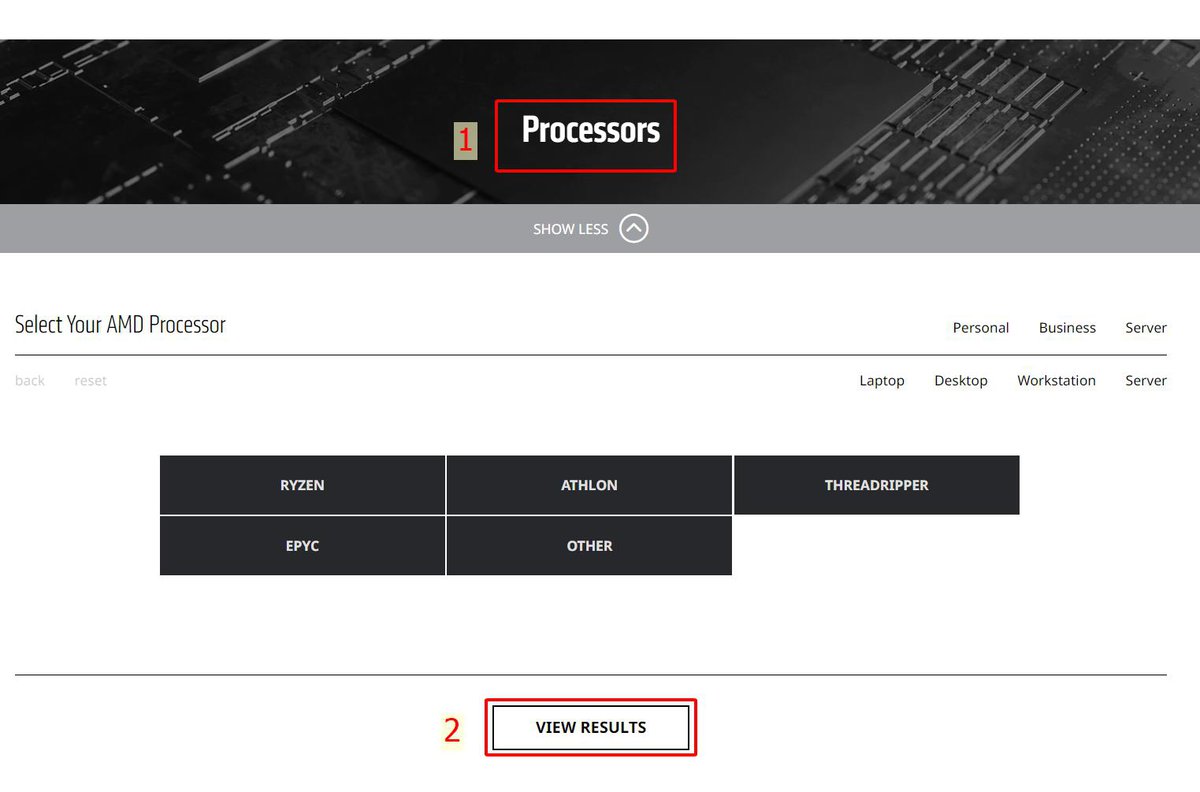
Step 2: Now, type your processor type in the Search bar, for example, I’ll enter “6950H” to search for the “AMD Ryzen™ 9 PRO 6950H” model.
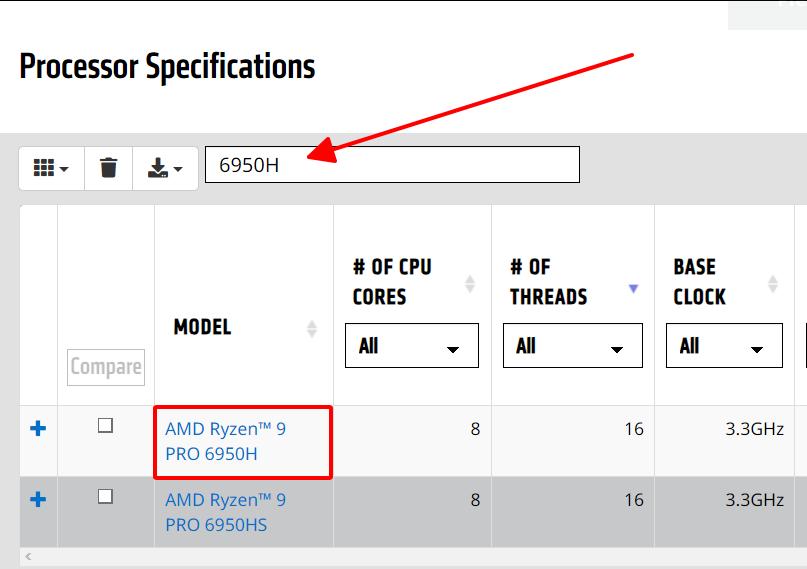
Step 3: Look for the DisplayPort™ Version row, and there you go.
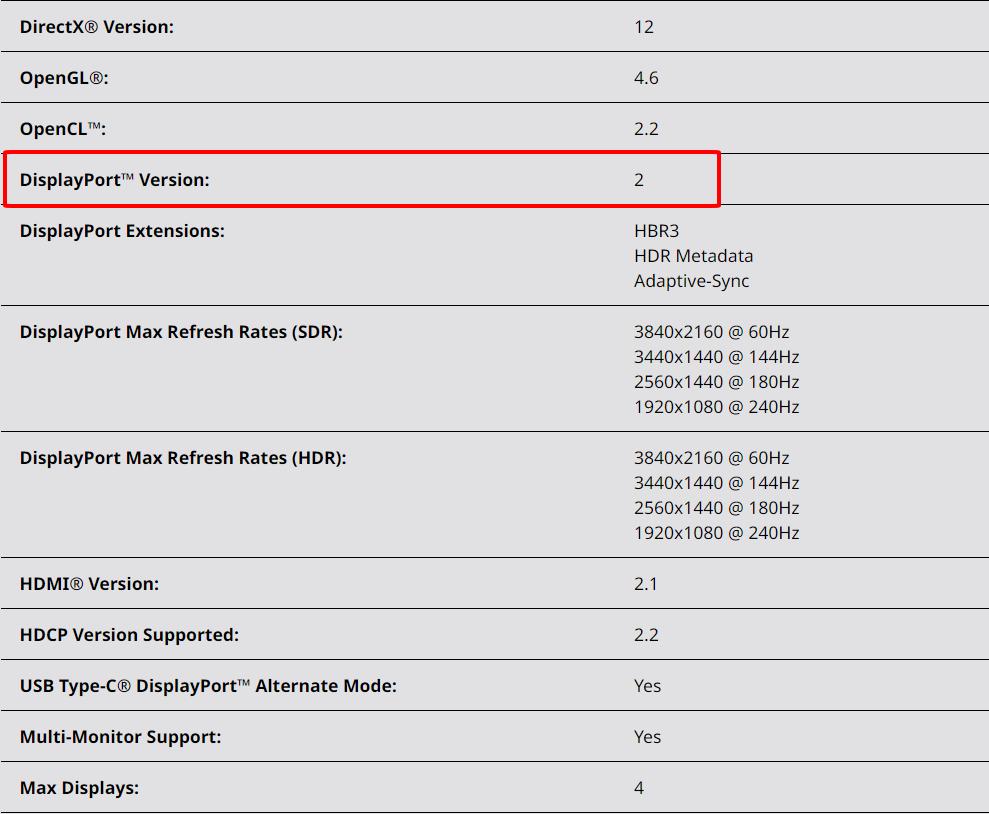
2. How to Check the DisplayPort Version of Your External GPU
The method to check eGPU’s DisplayPort version is much simpler, here is how.
Step 1: Check Your External GPU Name.
Step 1: Press the Windows button to open Start, and type in “Device Manager.”
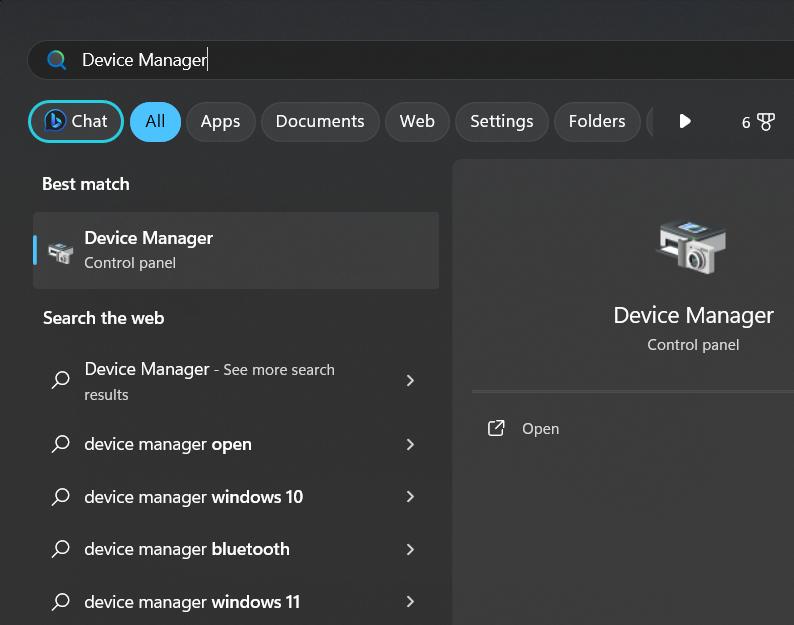
Step 2: Head to Display adapters, and you’ll see your external GPU beside your integrated GPU. Note down its name, in my case, it’s NVIDIA GeForce GTX 1650.
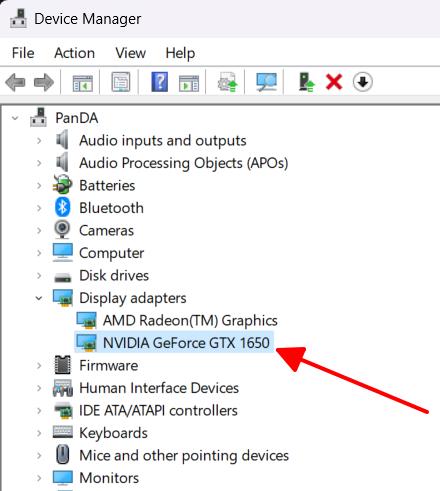
Step 2: Visit Your eGPU’s Manufacturer Site.
Search for your eGPU name under the manufacturer’s website.
The most common eGPU manufacturers are NVIDIA and AMD, so I’ll guide you through how to check your eGPU’s DisplayPort version of these two.
For NVIDIA, simply search for your eGPU model (using the command Ctrl + F) on this NVIDIA comparison website, and look for the row that indicates the DisplayPort version.
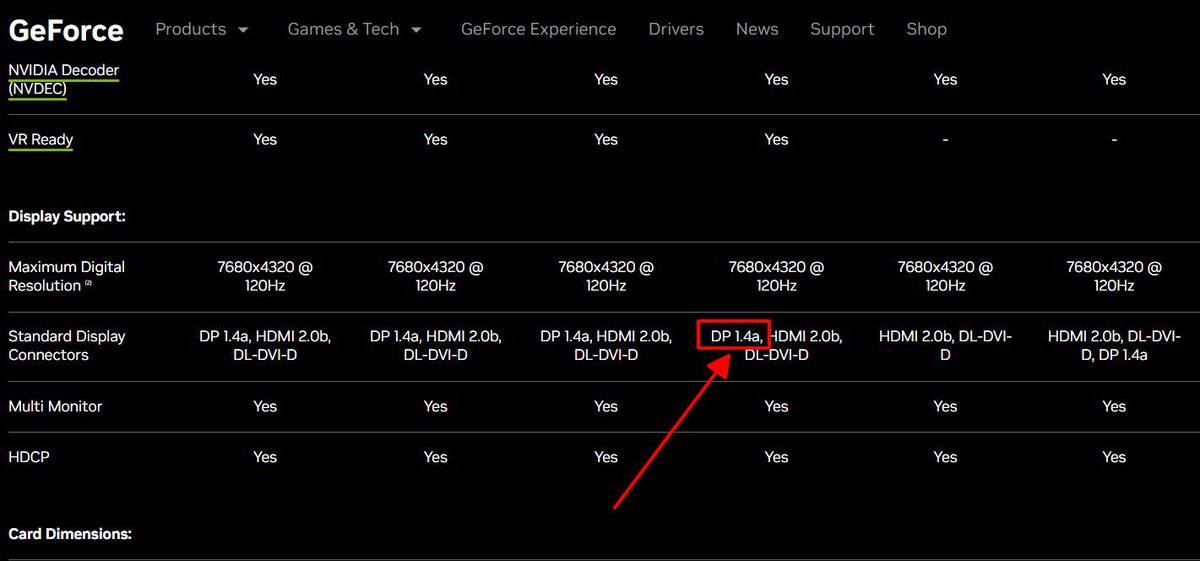
For AMD, search for your eGPU model on this AMD Graphics Specifications website, and look for the Connectivity section for the DisplayPort version.
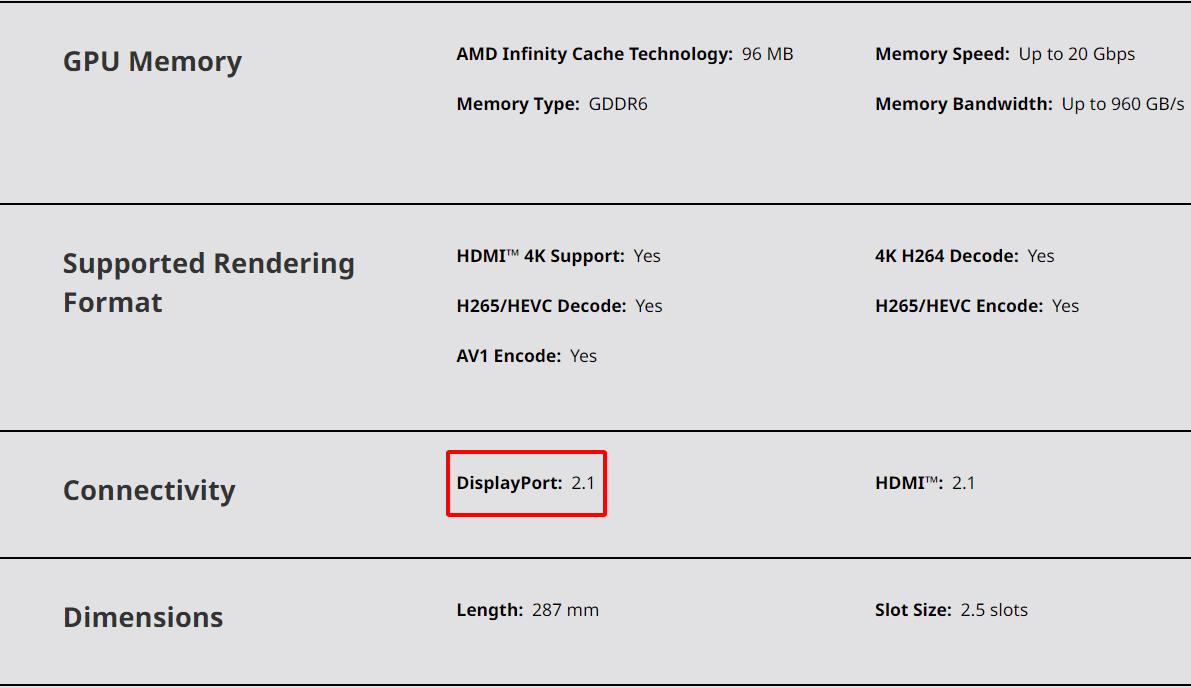
Are All DisplayPort Versions Backward & Forward Compatible?
Yes, all DisplayPort versions are designed to be backward and forward compatible.
However, the supported features, resolution, and refresh rate will be confined to the specifications of the lower version in the connection.
For a detailed comparison of the differences between DisplayPort versions, you can read this dedicated article.
Duy Anh is a seasoned technical editor specializing in helping readers troubleshoot TV, projector, and Wi-Fi issues. He’s always been drawn to logical problem-solving. His ability to approach matters from various angles with a neutral mindset enhances his technical expertise.

